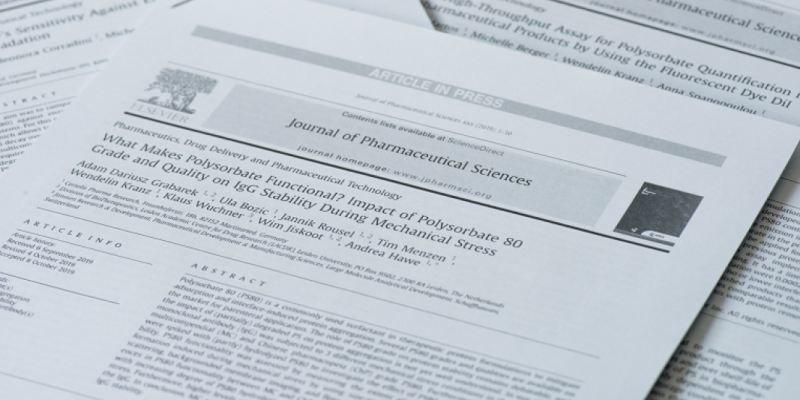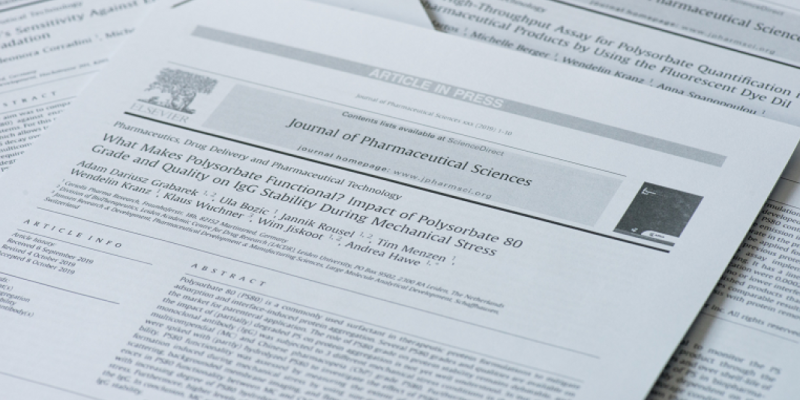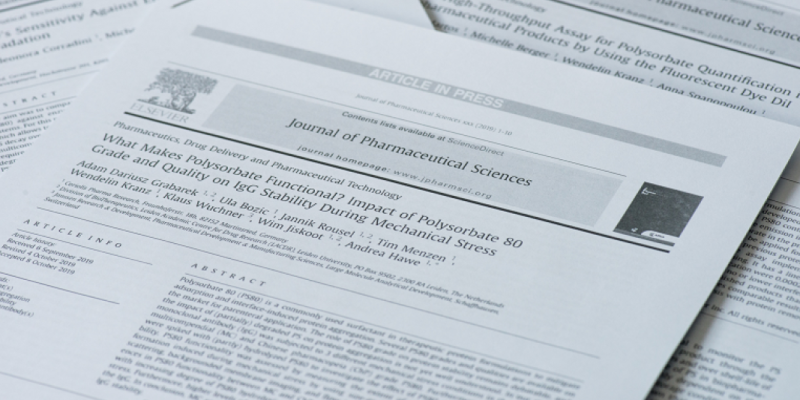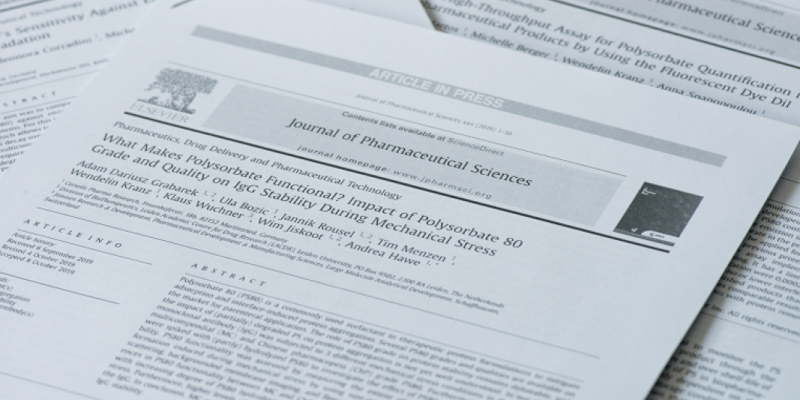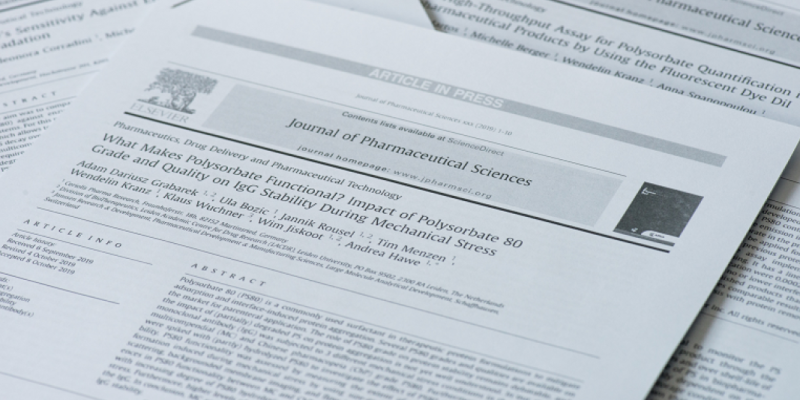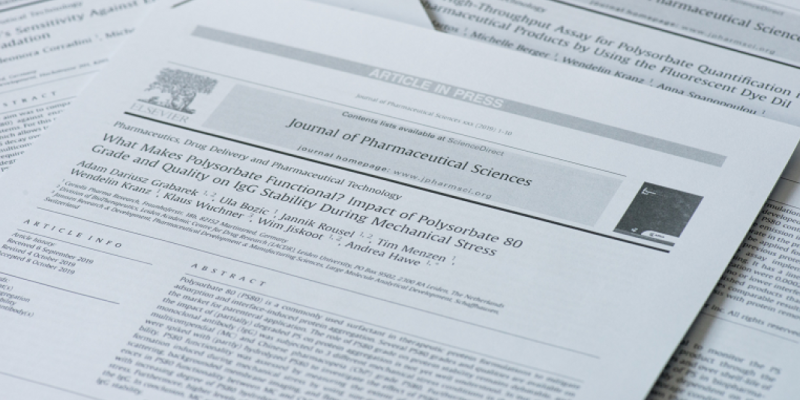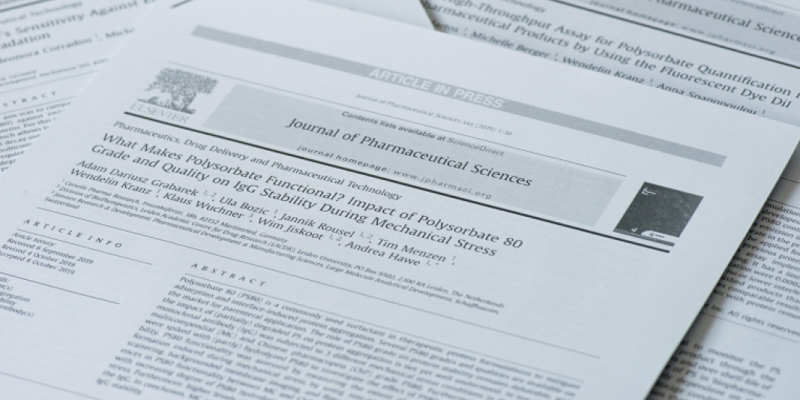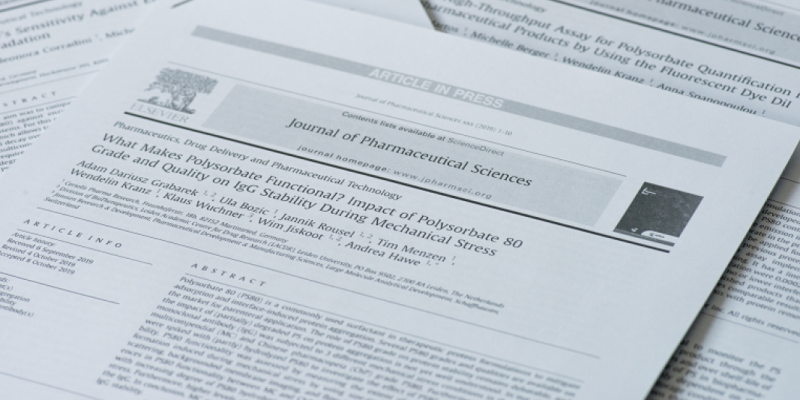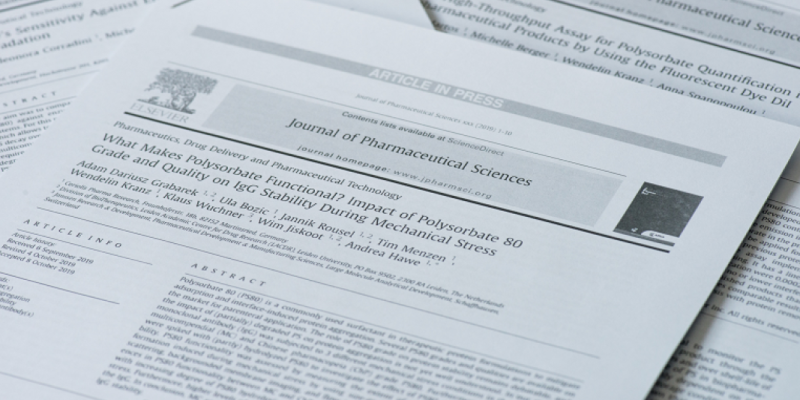Application of different analytical methods for the characterization of non-spherical micro- and nanoparticles.
Int J Pharm. 2013 SEP
Non-spherical micro- and nanoparticles have recently gained considerable attention due to their surprisingly different interaction with biological systems compared to their spherical counterparts, opening new opportunities for drug delivery and vaccination. Up till now, electron microscopy is the only method to quantitatively identify the critical quality attributes (CQAs) of non-spherical particles produced by film-stretching; namely size, morphology and the quality of non-spherical particles (degree of contamination with spherical ones). However, electron microscopy requires expensive instrumentation, demanding sample preparation and non-trivial image analysis. To circumvent these drawbacks, the ability of different particle analysis methods to quantitatively identify the CQA of spherical and non-spherical poly(1-phenylethene-1,2-diyl (polystyrene) particles over a wide size range (40 nm, 2 μm and 10 μm) was investigated. To this end, light obscuration, image-based analysis methods (Microflow imaging, MFI, and Vi-Cell XR Coulter Counter) and flow cytometry were used to study particles in the micron range, while asymmetric flow field fractionation (AF4) coupled to multi-angle laser scattering (MALS) and quasi elastic light scattering (QELS) was used for particles in the nanometer range, and all measurements were benchmarked against electron microscopy. Results show that MFI can reliably identify particle size and aspect ratios of the 10 μm particles, but not the 2 μm ones. Meanwhile, flow cytometry was able to differentiate between spherical and non-spherical 10 or 2 μm particles, and determine the amount of impurities in the sample. As for the nanoparticles, AF4 coupled to MALS and QELS allowed the measurement of the geometric (rg) and hydrodynamic (rh) radii of the particles, as well as their shape factors (rg/rh), confirming their morphology. While this study shows the utility of MFI, flow cytometry and AF4 for quantitative evaluation of the CQA of non-spherical particles over a wide size range, the limitations of the methods are discussed. The use of orthogonal characterization methods can provide a complete picture about the CQA of non-spherical particles over a wide size range.
Int J Pharm. 2013 SEP
https://www.sciencedirect.com/science/article/pii/S0378517313004638?via%3Dihub=


